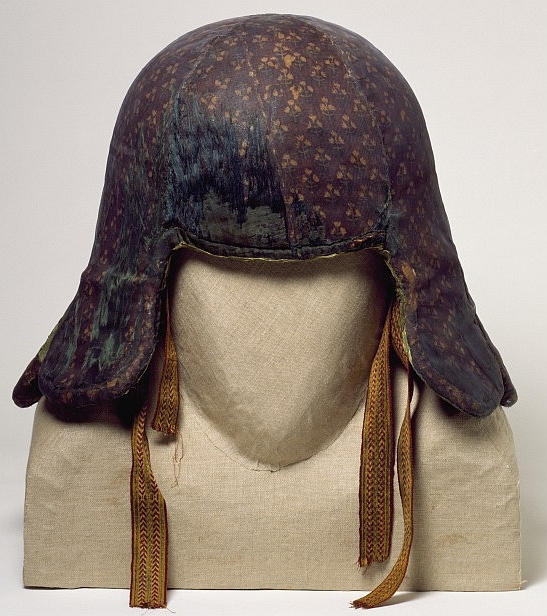
Register a SNAP EBT card with Amazon
Tipu Sultan's Fabric Helmet



This helmet made of quilted fabric and lined with velvet belonged to Tipu Sultan, ruler of Mysore in South India (r. 1782-1799). It was taken from his palace after the Siege of Seringapatam, when the army of the East India Company defeated Mysore, and Tipu Sultan was killed. The helmet has an embroidered Persian inscription on the fabric inside, stating that it had been dipped in the waters of the Zamzam well at Mecca and was therefore deemed to be impenetrable. The helmet was presented to the Indian Museum in London 'by the besiegers of Seringapatam', and was transferred to the South Kensington Museum in 1879.
War helmet of Tipu Sultan
Physical description: Very large quilted helmet with flaps at the sides and rear, composed of many layers of cotton quilted together. It is covered with dark green silk or satin, and lined with velvet of the same colour. On the inside of the rear flap an inscription is embroidered to the effect that it has been dipped in the holy well of Zam-Zam at Mecca, thus making it impenetrable.
Place of origin: Sriringapatna (made)
Date: late 18th century (made)
Materials and Techniques: Quilted cotton, covered in satin or velvet
Credit Line: Transferred from the India Museum in 1879.
Museum number: 3518(IS)
Marks and inscriptions: Persian inscription to the effect that it has been dipped in the holy well of Zam-Zam at Mecca, thus making it impenetrable.
Dimensions: Depth: 30 cm approx, Width: 42 cm approx, Height: 33 cm approx
Object history note: The helmet was taken at Seringapatam in 1799 at the siege, and presented to the Indian Museum 'by the besiegers of Seringapatam'. It was transferred to the South Kensington Museum in 1879.
Victoria and Albert Museum.